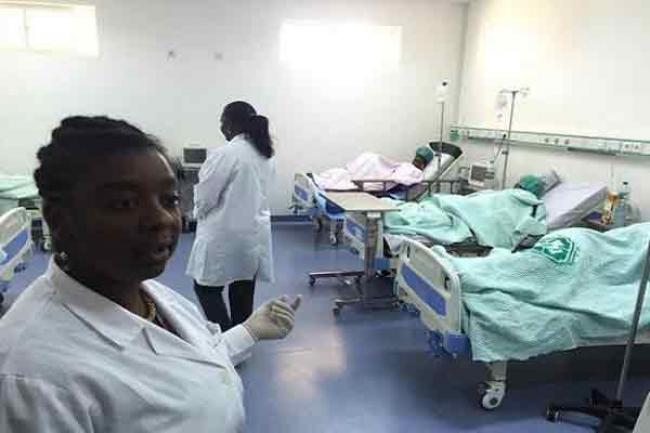Just Earth News 16 Feb 2017

WHO/Dalia Lourenço
No new confirmed cases reported from both countries for the past six months
“We are able to declare the end of one of the largest and most challenging yellow fever outbreaks in recent years through the strong and coordinated response by national authorities, local health workers and partners,” said Matshidiso Moeti, the World Health Organization (WHO) Regional Director for Africa, commending the unprecedented and immense response.
Since it was first detected in Angola in December 2015, the outbreak claimed at least 965 lives in the two countries, with thousands more suspected.
According to WHO, more than 41,000 volunteers and 8,000 vaccination teams with more than 56 non-governmental organizations undertook emergency inoculation campaigns, immunizing more than 30 million people.
The scale of response was so massive that the global stockpiles of yellow fever vaccines were exhausted several times.
In the first six months of 2016 alone, the partners delivered more than 19 million doses of the vaccine – three times the six million doses usually put aside for an outbreak.
The announcement by DRC proclaiming the end of the outbreak was made yesterday. It followed a similar announcement by Angola on controlling the disease last December.
Introduction of an innovative emergency response
The first cases in this outbreak were identified on 5 December 2015 in Viana, Luanda Province, Angola. It spread to the entire country and to neighbouring DRC, where local transmission was established in March 2016.
One of the major achievements of the response was the introduction of an innovative dose-sparing strategy – using one fifth of a regular dose of the yellow fever vaccine.
This technique, approved by WHO’s global vaccine expert group, ensured protection of as many people as possible from the immediate threat of a major urban outbreak.
For instance, in the DRC capital of Kinshasa, WHO supported the Ministry of Health to vaccinate 10.7 million people using this dose-sparing strategy as a short-term measure that will provide immunity against yellow fever for at least 12 months and likely longer.
ination campaigns, WHO and partners continue to provide support to the two countries to strengthen disease surveillance, control the spread of mosquitoes and engage with communities so that they can protect themselves.
However, with new threats posed by climate change, increased mobility of people within and across, and the resurgence of the Aedes aegypti mosquito, risks of yellow fever epidemics are increasing.
“Yellow Fever outbreaks like the one in Angola and the DR Congo could become more frequent in many parts of the world unless coordinated measures are taken to protect people most at risk,” said Ibrahima Socé Fall, WHO Regional Emergency Director.
“Therefore we need to implement a strong preventive approach to vaccinate the population at risk across the region.”
In one such response, WHO and its partners recently developed a new strategy calling for the Elimination of Yellow fever Epidemics to strengthen global action and integrate lessons learnt from the Angola and DR Congo outbreak.